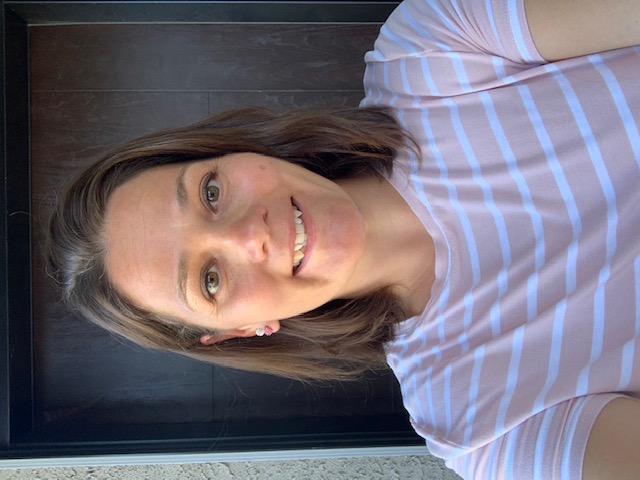The Final Piece – Coming Full Circle

In collaboration with my colleagues Bret and Brianne we have come to the end of designing our blended online course. The experience of collaboration, peer reflection and self evaluation has been a success. The final goal, a finished product that is usable in our teaching whether it be in a typical face to face classroom, a blended classroom or strictly an online version. Through the use of Google Classroom as our LMS we believe that we have developed a course that is simple to follow for both students and colleagues. Our course focuses on the outcomes and indicators in the Grade 8 Life Science Saskatchewan Curriculum – Cells, Tissues and Organ Systems. If you would like to join our classroom in the previous listed link you can login into google classroom with a gmail account and use this code (hyclltn) to become a student in our course.
Designing the Course – A Team Effort
Bret, Brianne and myself decided to collaborate on this course because as the saying goes “two heads are better than one” – so let’s just make it three. We selected the grade 8 science area because Bret and Brianne are currently teaching this in their classrooms and wanted to work on a project that could be implemented into their learning spaces. When designing a course together we had to be aware of our individual teaching styles, personal strengths and weaknesses and be willing to make accommodations. We believe that together as a team we have done a good job of creating an engaging course for students at Harbour Landing Elementary. Our first step in the whole process was to create the big picture and make the course profile. Next, we looked into the curriculum and divided up the outcomes so that each of our modules contained certain outcomes and indicators. We tried to make sure that our course had good flow within our modules so that students weren’t missing any key learning concepts. Lastly, we choose to keep a consistent theme for our slides so it would be less confusing for our students. However, we did decide that it would be okay to not worry about having identical teaching methods because the variation within our modules would provide engagement for all of our learners’ needs.

During this semester of class we had several informative conversations about creating online communities, the importance of making an online course accessible by all and explaining in our words the purpose of school. All of the conversations provided helpful insight into how we should continue to design our course shell to ensure that it became a valuable learning platform for everyone. At the halfway mark it was time to let others take a peek at our work and complete a peer review. What were they going to say? Would they think we were creating a useful course or would they think we were completely off track? Despite our nerves getting the best of us our reviewers provided us with some useful criticism and plenty of positive feedback.
Course Overview – Google Classroom
Together we developed a google classroom that allows students to be active participants in our course whether they be at home or in the classroom with us. In our google classroom we have set up an easy framework for our students to follow. Within the classwork section there are different categories the students can access. For example we have the general course information category – where they can find our contact information, a you-tube video on how to use google classroom, and a detailed outline of the course. There is also a section for each module that has been developed. Currently this course covers 3 of the 4 outcomes from the Saskatchewan Curriculum, if a teacher was planning to use the course they would likely need to complete a few more modules in order to fully complete the outcomes of the grade 8 science curriculum.

We have designed six modules that have a good flow of content knowledge from one to the next. In the first and second modules we focus on the history of the cell and its structures. In the third and fourth modules we move onto how the cell makes tissue and how tissues make organs. Finally in the fifth and sixth modules we make the connections between organs and organ systems and how they function to make a healthy human body. Throughout our modules we use a variety of different teaching methods, interactive digital tools and provide students with written and viewing learning opportunities. The modules all contain a summative or formative style of assessment where students complete a self reflection activity, a google form test, or an assignment with a provided rubric. We have attempted to find ways to ensure that there are relationship building opportunities between students and with their teacher by using a variety of digital tools and group activities to enhance the classroom community feel.
In order to create a course that we believe could be accessible to all we designed the following course profile. In our course profile you will find a more comprehensive plan for the specifics of our course. In our course profile we go into greater detail about our target audience, the course LMS and digital tool box, our course communication options, assignments, materials and assessments to be used. Overall we were attempting to create a course that provided an education that is relevant and concurrent with the pace and needs of our digital world. We want to provide students with the opportunity to learn in a variety of ways, by learning through and with technology hopefully we can prepare them to be digitally literate.
A true pleasure to collaborate and work with great like minded professionals. Thanks Brianne and Bret, until the next time we get to work together!

Leona,
Very well written post!
I think it is so important to honour your own teaching style, even when working alongside other educators! There is more than one way to achieve the desired outcome(s) and I think your group did a fantastic job of this.
After reading a few posts regarding the peer reviews, I think everyone was feeling a little vulnerable at first. After this experience, I found it easier creating my second module! You mention maintaining consistency and flow throughout your modules. I appreciate your deliberate attention to this, as this can be difficult when collaborating.
I enjoyed reviewing your module, as I recall, you had some fantastic resources included!
Awesome work– I hope you get a chance to implement this course “in real life” because I think your students would greatly benefit!
Hi Leona,
Thank you for sharing your learning journey. Collaborating with others allows for sharing and helping to clarify thoughts and ideas. I think the three of you had a unique learning experience in conjunction with the in class learning. I am sure your students will reap the benefits of your learning as you share your modules with them.
I loved your Summary of Learning!! You chose a unique tool to share your experiences and helped continue the learning for your classmates. Your content had a logical flow and smooth delivery. I appreciated the effort that was made to include interesting graphics. Well done!
I enjoyed learning alongside you in this class!
Bev